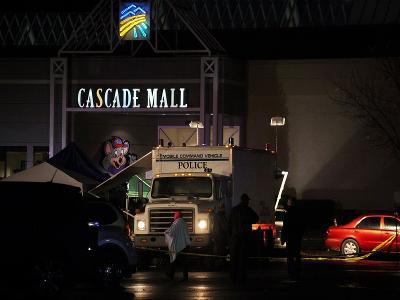Italy’s most powerful earthquake in 36 years stuck the country’s mountainous centre on Sunday, panicking shell-shocked residents for the third time in two months and flattening a world famous 600-year-old basilica.
Remarkably, there were no reports of any death as a result of the 6.6-magnitude quake but more than 3,000 people were left temporarily homeless, the national civil protection agency said.
“As far as people are concerned, the situation is positive but many buildings are in a critical state in historic centres and there are problems with electricity and water supplies,” agency head Fabrizio Curcio told reporters.
The quake struck at 7.40am (2.40pm Singapore time) near Norcia in the region of Umbria, unleashing a shock felt in the capital Rome and even in Venice, 300 kilometres away.
Norcia residents were barred from returning to their homes on safety grounds and, as night fell, hundreds were being transported by bus to nearby Lake Trasimeno, where temporary accommodation in hotels and gymnasiums had been arranged.
It was Italy’s biggest quake since a 6.9-magnitude one struck the south of the country in 1980, leaving 3,000 people dead.
More than 50 powerful aftershocks rumbled throughout the day, some 15 of them between magnitude 4 and 5.
“We are going through a really tough period,” Prime Minister Matteo Renzi said, reiterating a government pledge to rebuild every damaged house and ensure that dozens of remote communities do not become ghost towns.
DESPAIR SETS IN
The most important architectural casualty was Norcia’s 14th-century Basilica of Saint Benedict.
Built on the reputed birthplace of the Catholic saint, it had survived dozens of quakes over the centuries. But it had been compromised by other recent tremors and Sunday’s saw it collapse in on itself with only the facade left standing.
The church is looked after by an international community of Benedictine monks based in two local monasteries which attract some 50,000 pilgrims every year.
“It was like a bomb went off,” said the town’s deputy mayor, Pierluigi Altavilla. “We are starting to despair. There are too many quakes now, we can’t bear it anymore.”
Lucia Rafael, one of several nuns forced to flee their convent in the town, told AFP the prolonged shaking had “felt like the apocalypse.” She added: “We don’t want to leave, we want to stay and help others with our prayers, even if it means staying in a tent.”
Giuseppe Pezzanesi, mayor of Tolentino in the neighbouring Marche region, said the small town had “suffered our blackest day yet”. “Let’s hope that is an end to it, the people are on their knees psychologically.”
SHOCK FELT IN ROME
The quake’s epicentre was located at a very shallow depth of one kilometre, six kilometres north of Norcia, according to the US Geological Survey (USGS), which measured the magnitude at 6.6.
Italy’s institute of geology and vulcanology (IGNV) measured the quake at 6.5 and said it had been preceded by a 6.1 magnitude shock an hour earlier.
It came four days after quakes of 5.5- and 6.1-magnitude hit the same area and nine weeks after nearly 300 people died in an August 24 disaster in the tourist town of Amatrice at the peak of the holiday season.
The 13th-century civic tower in Amatrice, which was damaged but left standing by the August quake, also collapsed on Sunday.
As with Wednesday’s tremors, the impact was mitigated by the fact that any buildings deemed vulnerable to seismic activity had been evacuated.
The quake was powerful enough to set off car alarms in Rome, 120 kilometres from the epicentre.
Part of the capital’s underground rail network and a road flyover were temporarily closed to allow structural checks to be carried out and schools will not open Monday for the same reason.
Much of Italy’s land mass and some of its surrounding waters are prone to seismic activity with the highest risk concentrated along its mountainous central spine.
Italy straddles the Eurasian and African tectonic plates, making it vulnerable to seismic activity when they move.
In addition to the Amatrice disaster in August, just over 300 people perished when a quake struck near the city of L’Aquila in 2009.
In 1980, tremors near Naples left 3,000 dead and an estimated 95,000 died in the 1908 Messina disaster, when a quake in the waters between mainland Italy and Sicily sent massive waves crashing into both coasts.
– AFP/de

























